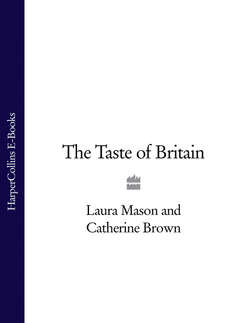Читать книгу The Taste of Britain - Hugh Fearnley-Whittingstall - Страница 120
HISTORY:
ОглавлениеBath Olivers are named for William Oliver, a doctor who was born in Penzance in 1695. He lived most of his life in Bath and was the city’s most important practitioner during the time of its greatest expansion. The accepted account is that Dr Oliver created a recipe for thin, palatable, easily digested biscuits, to be eaten by those who came to Bath to take the waters and recover from excessively rich diets. The story continues that Dr Oliver set up his coachman as a baker; providing some premises, 10 bags of flour, £100 and the recipe. This recipe passed by a sort of apostolic succession from Atkins, the original coachman, to Norris, to Carter, to Munday, to Ashman, until it finally came into the possession of Cater, Stoffell & Fortt, who had a shop in Bath until the mid-1960s. The biscuits were always known as Dr Oliver’s, then, when in the hands of Fortt, as Original Bath Olivers. Olivers or Bath Olivers were quite possibly a similar biscuit, but not produced by those with the sacred recipe. Nor did they have the distinctive packaging and stamp of the good doctor’s head. Although today they come in paper packets with the familiar livery, for many decades they were sold in tall tins.
Although there is this apparently cogent account of an early origin for the biscuits, the earliest reference so far discovered to Olivers is given by Maria Rundell (1807), herself a resident of the city; she gives a recipe which shows them to have been a plain yeast-leavened biscuit. Similar recipes, for example one for ‘Bath biscuits’ in The Family Cookery Book (1812) can be found from the same period.
Law’s Grocer’s Manual (c. 1895) commented that there were several makers of Bath Olivers, and John Kirkland (1907) noted the biscuits were a speciality ‘still made in great quantities in Bath, and in which some of the leading houses take great pride’. He observes that there was considerable diversity in the recipes and methods of manufacture, and that the biscuits should be very thin and rich, made with butter only. These statements confirm the biscuits were not as exclusive as legend instructs and cast some doubt on the notion that they were an early version of a health food.
The modern biscuits, still manufactured under the name of Fortt’s Original Bath Olivers, but no longer owned by Cater, Stoffell & Fortt, are probably rather different to those known at the beginning of the last century. Various sources agree that they required great care, and possessed distinctive characteristics: they wanted a well-leavened dough, thorough kneading, and were dried in a warm cupboard for 30 minutes, then baked in a slack (cool) oven (Simon, 1960); a special bowed rolling pin was used, so that the biscuits were thinner in the middle than at the edge; there was a singular method for docking (pricking) the dough which required 2 biscuits placed faces together, pricked, and pulled apart again; they should burn a little in the middle during baking ‘which is correct for a good Oliver’ (Law, c. 1895).
The chocolate-coated version has been made since at least the 1960s.
